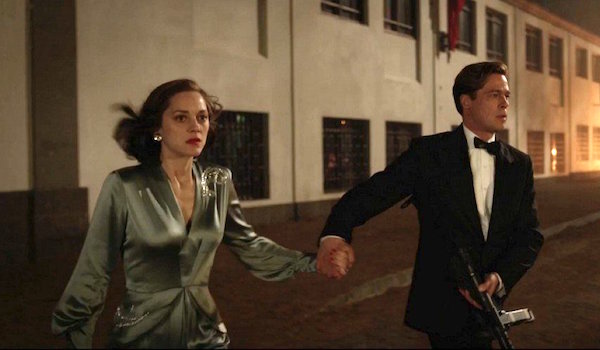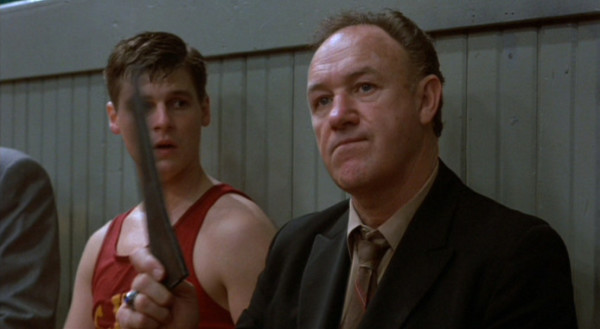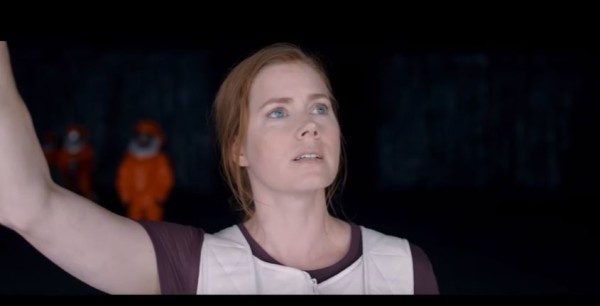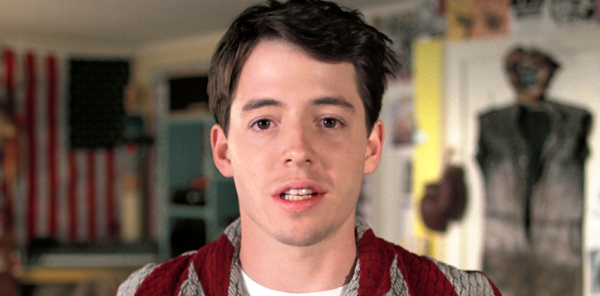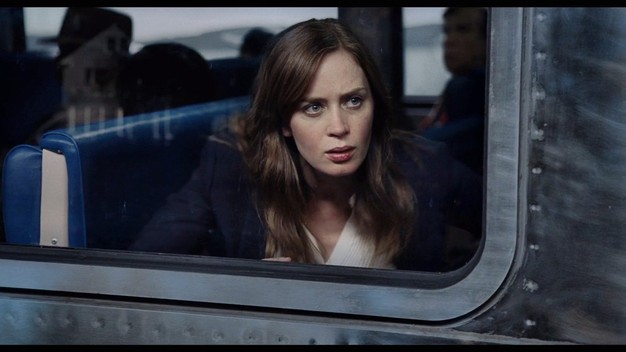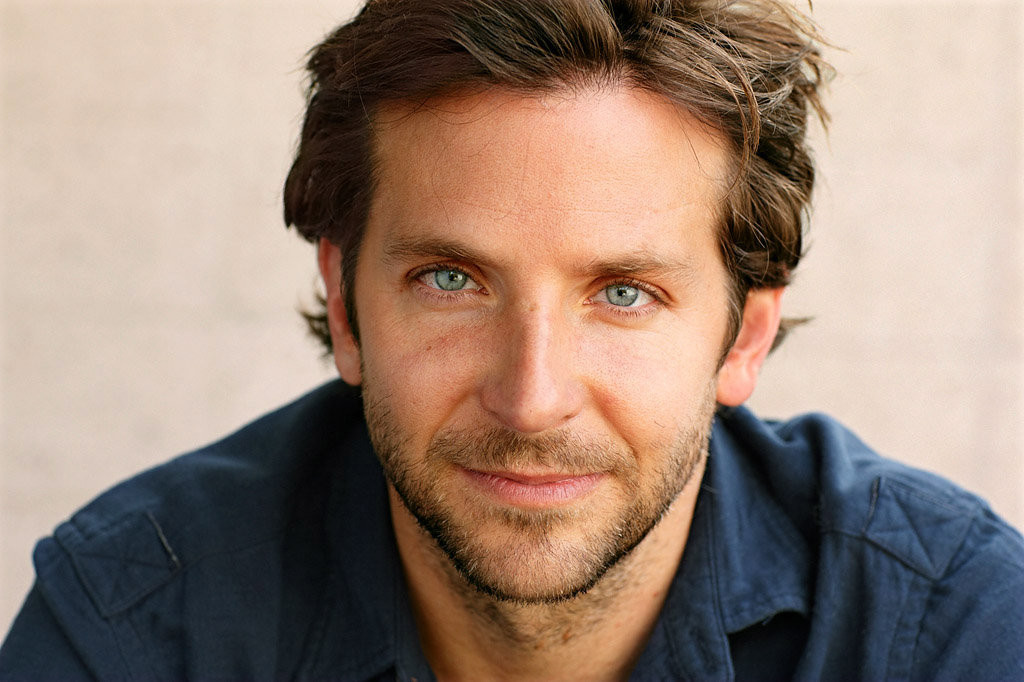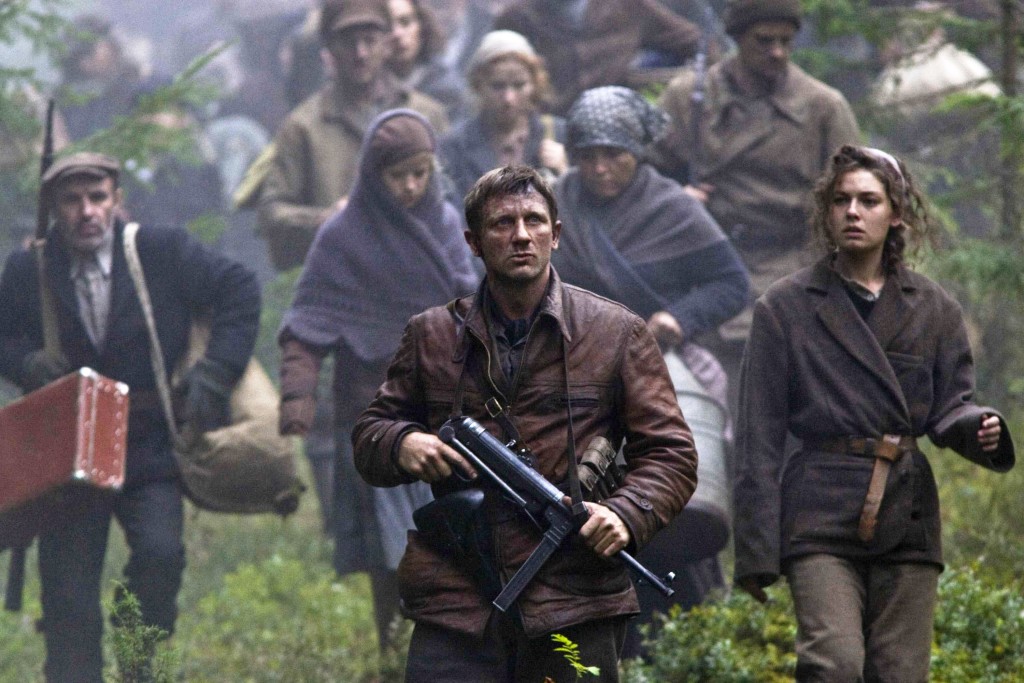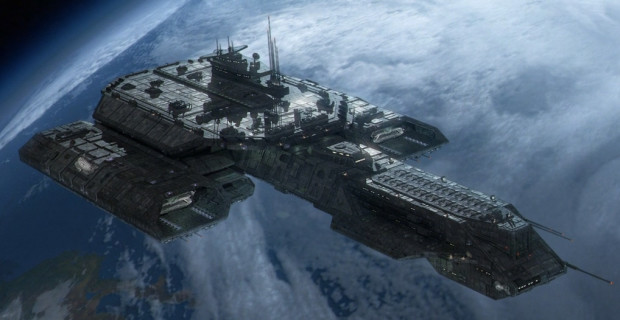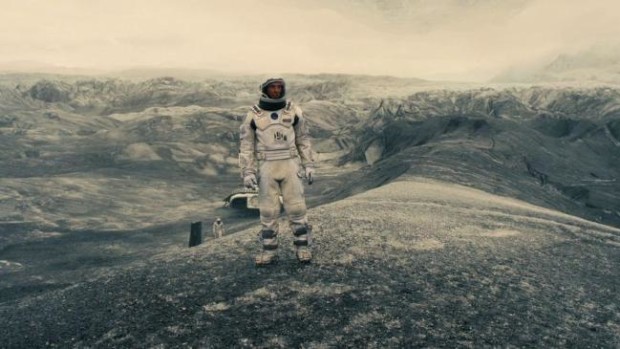THE WINNER HAS BEEN ANNOUNCED BELOW
Look who’s back, baby! It’s the Scriptshadow Tournament!! In the last quarterfinal battle, blood was shed. Wars were waged. Commenters were banished. Some opined that the tournament would never return. It would become a footnote on the bottom of the Scriptshadow page. “Here lies the tournament that always is and never was.”
But alas, if there’s one thing I’ve learned about the internet, it’s that when there’s an argument, throw yourself further into that argument! Stoke the fires with the blood of cheetahs. Bask in the sunshine while laughing with unicorns! And when it’s all said and done, sleep in the pouch of the nearest kangaroo–
Okay, now I’m not making sense.
Right, so, we’re on WEEK 3 of the Quarterfinals. Already into the Semifinals are Katherine Botts with her detective take on A Christmas Carol, “Cratchit,” and the surprise winner of Week 1, “Odysseus and His Boy,” by Steffan DelPiano.
Here’s how this works. Read as much from each script as you can. Then vote in the comments section which script you think deserves to go into the semifinals. Please explain why you voted for the script so that we know you’re a real voter and not a friend of the writer. As always, I’ll leave it up to the writers to decide if they want to summarize their changes in the comments.
Voting closes at 10pm Pacific Time Sunday evening, when the winner will be announced.
Good luck everybody!
#3 SEED
Title: The Bait
Writer: Billie Bates
Genre: Romantic Comedy
Logline: An untrusting woman, employed to seduce men prior to marriage for concerned wives-to-be, has her world turned upside down when she falls for her latest target.
#6 SEED
Title: The Attacker
Writer: Jean Roux
Genre: Action
Logline: After scoring the winning goal of a match by cheating, a soccer player has to go searching for his brother in the most dangerous neighborhood of the town that has just lost.
WILD-CARD
Title: Hellfire Alley
Writer: Kenneth Kleemann
Genre: Western/True Story
Logline: The gritty, UNTOLD story behind the real outlaws who inspired the classic film, THE WILD BUNCH.
WINNER OF QUARTERFINAL WEEK 3: Nice work to all the contestants in this week’s quarterfinal. Getting this far is not to be taken lightly. But only one can move forward. And that script moving forward is… “The Bait,” by Billie Bates, our first seeded script into the semis (#3 seed). Congrats, Billie! I know this process has been difficult for some. Keep in mind, I wanted to do something that’s never been done before. And when you do something that’s never been done before, the first time is going to be rough. We’re learning what works and what doesn’t. And the next time we do this will be better for it. That’s why I’ve always treated this contest as a fun experiment (it’s FREE remember!). Don’t take it too seriously and have fun guys. It’s writing. It’s supposed to be enjoyable. Next week are the last 3 quarterfinal scripts. Shouldn’t take a mathematician to figure out what those are. So if you want to start reading them early, get to it. I’ll meet you back here next week!
Michael Jackson once sang, “I’m looking at the man in the mirror. I’m asking him to change his ways.”
I don’t know if mega-star screenwriter Steven Knight (Allied) is a Michael Jackson fan or not, but I was reading an interview he did at Slash-Film the other day, and one of the questions asked of Knight was one that has pockmarked the screenwriting community for centuries. It’s the closest thing we have to a trigger question. Our equivalent of a political nut walking into a room and saying, “I can’t wait for Trump to build that wall.”
“SHOULD YOU FOLLOW THE RULES?”
Early in the interview Knight says that he avoids following screenwriting rules, specifically the one that states a character has to CHANGE over the course of a movie. When then asked which rules he isn’t fond of, Knight doubled-down on character change…
I mean, the arc thing is interesting. It’s good sometimes to have a character that starts as one thing and ends as another, but James Bond, Hercules, these are pretty enduring stories. [Laughs] Like a Greek myth. In a Greek myth, you can have the characters and objects, and it just goes through these events in the same as a computer game now.
I’ve always found this discussion fascinating because I believe it’s essential that a character change over the course of a movie. In fact, I’d argue that 99% of main characters in films do change, and that if your character doesn’t change in some way, we’ll feel let down, even leave disliking that character.
The only time a character doesn’t change and it still works is when that character dies because of their inability to change. I just watched Hell or High Water, and in that movie, the trouble-making brother lived a selfish sinful life. He never changed his ways (spoiler) and he ended up dying because of it. We also saw this with Robert DeNiro’s character in Heat.
Here’s where everyone gets tripped up though. They think that “change” has to happen along the traditional lines of assigning your character a flaw, and then having that character overcome that flaw by the end of the movie.
I agree that, when done well, this is the most effective way for change to work. When a selfish character (Trainwreck) learns to become selfless, we feel warm inside. When a stubborn character (Hoosiers) learns to listen to others, we feel tender inside.
However, the more scripts I read, the more I realize this type of change doesn’t happen often. And a look into history tells us why. The time when this advice became popularized was in the 80s and 90s, a period when comedies, rom-coms, and less serious fare dominated. In those movies, the “flaw-change” worked perfectly. The films (along with animated and sports movies), were already skirting reality, so the fact that this unrealistic 180 degree character turnaround occurs at the end of the movie didn’t faze anyone. They bought into it wholeheartedly.
But when you watch a movie like Drive or Bourne or Mad Max or Arrival – you don’t see traditional flaws explored. And because you don’t, you don’t see that arc Knight is referring to.
BUT…
Those characters still change. And the reason screenwriters miss it is because they’re looking specifically for the flaw-change. But alas, my screenwriting snickerdoodles, there are OTHER WAYS TO CHANGE A CHARACTER.
Two big ones, in fact:
LEARNING
and
OVERCOMING
Learning is just like it sounds. The character doesn’t have to become a different person by the end of the movie, which is where rule-defamers get their panties in a bunch. But they do need to learn something. I consider this a “mini-change,” and while not as earth-shattering as a core change, it still leaves the audience feeling good, since the character has evolved.
One of my favorite movies of all time is Ferris Bueller’s Day Off, a film used by flaw-change naysayers as proof that your main character doesn’t have to change over the course of the film. Ferris Bueller has no flaw, they say. And therefore he doesn’t fix his flaw by the end of the movie.
But let’s look at that analysis more closely. Is Ferris Bueller the same person at the end of that film as he was at the beginning? I’d say no way. Ferris has LEARNED two valuable lessons – the value of friendship (with Cameron) and the value of family (with his sister). If Ferris hadn’t changed, he’d still be joking around when Cameron has a breakdown destroying his father’s car. If Ferris hadn’t changed, he wouldn’t have connected with his troublemaker sister, who saves his ass at the end of the day.
The operative word here is that Ferris has LEARNED something. And if you’re not going to add a full-scale flaw-change, this is a nice secondary option. Make sure your character has learned something by the end of the day. It doesn’t have to be big. But it should make us feel that, going forward, the character is better equipped for life.
Next we have “OVERCOMING,” and overcoming comes in two flavors:
LOSS
ADDICTION
Movies that tackle these subject matters tend to be more serious. As a result, the gimmicky “overcoming a flaw” stuff doesn’t work as well (it can work, but it takes more skill to do so). The good news is, this is a fairly easy “change” to pull off. Since the problem is built right into the character, all you have to do is have the character overcome that problem and they have “changed.”
Arrival is an example of “overcoming loss.” Amy Adams’s character, Louise, has lost her child. Her entire life is defined by this loss. By the end of the movie, she’s able to find peace with the loss and move on. Louise is in a better place at the end of the movie than she was at the beginning (note: I know it’s more complicated than that because of the time stuff – but I don’t want to get into spoilers here).
I want you to think about that for a second because it gets to the heart of why, I believe, Steven Knight is wrong. If Louise is the same bummed out hopeless person in the last frame of the movie as she was at the beginning, would we be satisfied? I’m willing to bet you’d all have the same reaction: “Well what the fuck was the point of that then?” This is why change is important. It makes us feel like the journey we just went on had a point.
For an example of a character overcoming addiction, look no further than The Girl On The Train. That film is about a woman whose drinking is so bad, it’s preventing her from solving a murder. If she doesn’t change her ways (her drinking), she will wallow in this drifting pointless existence til the day she dies. Change is imperative for her to succeed and for us to feel satisfied. And she does just that.
And that’s what I want to get across here. Characters must change over the course of the story. It doesn’t have to be with a flaw. It can be by learning something. Or it can be by overcoming something within. But they can’t be at the exact same point at the end as they were at the beginning, or else what’s the point of making us watch your stupid movie for two hours?
I’m so sure of this, that I pose a challenge to you: Name me any good movie where the main character doesn’t change in the three ways listed above (flaw, learn, overcome) where the character doesn’t then end up dead.
And yes, I know the first film you’ll go to is the James Bond series. I don’t know these films well enough to argue against them. But I have a feeling that, in a lot of Bond films, Bond learns something by the end of the movie. Especially in the Daniel Craig versions, which are more character-driven. But what I’m really curious about is if anyone can give me examples other than Bond. And remember, the films have to actually be good! Meaning, the act of not changing the characters resulted in a strong film.
Go at it!
Genre: Biopic
Premise: The, err, “true story,” of how the great Harry Houdini went on a secret mission as a U.S. spy.
About: Ah, Hollywood. What a funny place. For shit to come together, all these different “buzzy” paths have to cross. A hot director has to come across a hot screenwriter has to come across a hot actor. Then, and only then, are projects born. Why? Because everyone n Hollywood is a fucking wimp and they need all the stars aligned before putting their names on the line. Here we have Dan Trachtenberg coming off the success of Cloverfield Lane. We have Noah Oppenheim, who’s receiving love for his Jackie screenplay. And I’m sure we’ll have some hot actor playing Houdini named soon. I mean, we got Bradley Cooper attached to a project yesterday. Why can’t we do it again? Keep in mind this is the 2011 draft and there have likely been rewrites.
Writer: Noah Oppenheim
Details: 133 pages (May 13th, 2011 draft)
The trick with any biopic is always…
Wait a minute. Did I really start this with “The trick with…?”
Do I have any shame?
You all know the answer to that so why even attempt the illusion?
What I really wish Houdini could make disappear is biopics. Now that would be a trick worth paying for. But in the absence of this act of wonderment, at least cast a spell on the genre, one that turns the biopic into something actually good.
Imagine my surprise, then, when the wool was not pulled over my eyes. But rather we got a biopic that’s truly different. I snarfed. I gasped. I wondered how the fuck this was conceived. But most of all, I was relieved. A biopic that didn’t feel like a biopic!
Houdini starts out like you think any biopic would start out. We get one of those oft-used cross-cuts between the present (Houdini trying to salvage a buried-alive trick gone wrong) and the past (Houdini as a child stealing a loaf of bread for his starving family). I figured I was in for one long biopic retread.
But then things get weird. President Woodrow Wilson calls Houdini and tells him that his 28 year-old daughter, Margaret, has been kidnapped by someone in France. Wilson believes Houdini’s unique talents make him the perfect agent to go and retrieve his daughter.
Looking for a new challenge, Houdini teams up with Wilson’s stuffy lackey, Andrew Day, and the two seahorse their way to La Francoise. Once there, Houdini calls upon old friend (and rival) Chung Ling Soo, a famous magician who’s been known to publicly roast Houdini. But no worries, it’s all for show, as is Chung himself, who’s actually, under all the make-up, a white American!
Houdini, Soo, and Day find their main lead in a dude who arrogantly calls himself “The Elder.” The Elder is a white spooky motherfucker who’s so ugly, he deserves to be chased. However, when he leads them to Margaret, we learn that Margaret wasn’t kidnapped at all. She was trying to piss off daddy by dating an older weirdo. Those spunky president’s daughters. I hope Ivanka’s not taking notes.
But, as it turns out, The Elder really IS bad. And when he kills Soo, Houdini swears revenge, chasing him to Istanbul. He’s joined by the increasingly annoying Day and the closest thing to a 1914 Women’s Rights Movement in Margaret. Will these three mismatched wackadoodles youngify The Elder? Or might this be the one trick Houdini can’t pull off?
Okay, I gotta give it to Oppenheim. He got me. I thought this was going to be another lame-o biopic. Instead we get, “What if Harry Houdini were Indiana Jones?” Granted this was written during a time when every writer was doing this shit (IP-free historical figures as superheroes). But with all those projects dying off, Houdini-as-Indiana feels fresh again.
Look, it’s simple, guys. When you’re writing in a hot genre, you have to be cleverer than the next guy. I was going to stab my eyeballs out with overpriced Universal City Walk Harry Potter magic wands if this was yet another biopic. By doing something that NOBODY ELSE IS DOING makes this a project worthy of production.
Yet here was the problem with this approach. It didn’t exploit Houdini’s unique talents enough. I would argue that Houdini turned into a straight agent. Yeah, he was braver than his cohorts. But that doesn’t exploit his one advantage – the fact that he was a magician. Especially if you’re going to go so far as to have Houdini break into places like, “The Fortress of the Seven Towers.”
Then there’s the main character dynamic pulling us along. From a Screenwriting 101 perspective, it was good. You have the lawless Houdini paired up with the by-the-book Day, and then the opinionated Margaraget never far behind. This led to a requisite amount of conflict-infused dialogue.
And yet… that dialogue was as predictable as the taste of morning-after Chinese good.
That’s the thing with relationship dynamics. They’re like everything. If you do them the way they’re supposed to be done, with everyone saying and acting the way that “works best for a screenplay,” they become stale, like an uninspired casting choice. Yes, Ryan Gosling may be the perfect actor to play the brooding young anti-hero in that latest drama. But haven’t we seen him here before? And doesn’t that make his performance less exciting?
For this reason, never be afraid to go against convention, to try new things out. You may find that they don’t work. Hell, you may try several things that fail and end up right back where you started, with that crazy vs. conservative dynamic. But you may also find something beautiful and unexpected, like the weird dynamic between Hank and Manny in Swiss Army Man.
Plot-Wise, Houdini is an exercise in CHANGING PLOT GOALS. We start out with saving a kidnapped daughter. Then the goal becomes revenge. And finally the goal becomes to stop a madman who’s planning to attack all of Europe. Remember, goals can be achieved at any time in a script, as long as you replace them with new goals of greater importance. And Oppenheim does that here.
I’ll finish this by saying Houdini was a fun romp. But while its unexpected left turn into Indiana Jones territory left your adventure bone tickled, no room was ever created to explore Houdini himself. And isn’t that the one reason to watch a biopic? To see what makes a man tick. There was no ticking here. More hot-dogging. And while that hot-dogging was fun, a character exploration would’ve added some much needed mustard.
Then again, will an Indiana Jones starved public even care?
[ ] What the hell did I just read?
[ ] wasn’t for me
[x] worth the read
[ ] impressive
[ ] genius
What I learned: I was thinking, what could a writer do now in the biopic space that isn’t being done much? And I came up with a pretty cool idea. Rivalries. Instead of writing about one person, write about two. And when I say two, I mean two people who really hate each other. In any movie idea, the main thing you’re looking for is tons of conflict. And nasty rivalries have that. I googled historic rivalries right after this review and found tons that haven’t been put to screen before. Could be an opportunity, guys. Just throwing it out there!
Hey guys, sorry for the lack of posts. I enjoyed the holidays too much, apparently. So here’s how this week is going to work. This is TUESDAY’S post. Wednesday is another review. Thursday is an article. Friday is the Scriptshadow Tournament. The good news is that tomorrow or Wednesday, I’m sending out a NEW NEWSLETTER! And I review a really good script from a really good screenwriter. Or, at least, it’s good so far. :) So make sure to sign up for the newsletter at Carsonreeves1@gmail.com.
Genre: Period/World War 2
Premise: A paratrooper finds himself stranded behind enemy lines when his plane goes down while on one of the most important missions of World War 2. Can he still complete the mission in time?
About: EDIT (UPDATE) – Oh wow, they just attached Bradley Cooper hours after review went up. Talk about timing this just right. :) Zach Dean is a mainstay on the Black List. This is either his 3rd or 4th entry on the list, and his writing seems to get better each time. This one finished on the lower half of the 2015 List. Atlantic Wall was sold in PITCH FORM in a competitive bidding situation. That’s what happens when you’re getting on the Black List every year, boys and girls. Companies start competing for your scripts!
Writer: Zach Dean
Details: 116 pages
If you’ve been here long enough, you know how I feel about World War 2 stories. There are in the neighborhood of 300 movies about World War 2. So if you’re going to bring a new story to the table, it better be unique. One of my favorite World War 2 movies is Life is Beautiful because it’s a CONCENTRATION CAMP COMEDY. How could that movie NOT be unique??
What I don’t like is when writers use a generic World War 2 situation that isn’t that interesting just so they can slap that “World War 2” label on their logline. Like that Daniel Craig movie – what was it? Defiance? About a bunch of people who lived in the woods during World War 2 (“We must go deeper into the woods, Frank.” “Deeper? But we’re literally 100 miles from civilization.” “God dammit, Frank, I said DEEPER!”) WHAT THE FUCK WAS THAT MOVIE????
My favorite talk show right now is, by far, James Corden. My least favorite is Seth Meyers. The reason Corden is so good and Meyers is so forgettable is because James Corden asked the question, “What do we bring to the table that the other talk shows don’t?” Or, more to the point: “Why do we deserve to exist?”
By asking that question, they had no choice but to differentiate themselves. So they added a multi-interview format instead of one guest at a time. They created segments that were online friendly (Carpool Karaoke) and dance numbers (Intersection Musical). Meanwhile, what does Seth Meyers do? He brings the exact same no-frills format that talk shows have been using for 50 years and his late-night show is the least watched as a result.
This is a long-winded way of saying, your idea must have a reason for existing. If you’re just writing something because it has a cursory attachment to a high-profile event, it’s going to reflect in the execution. One of the reasons it’s taken me so long to read this Black List script is because I was afraid that was the case. I’m hoping I’m wrong. Let’s find out…
It’s 1944 and Britain is about to enact something called Operation Overlord, where they’ll fly over the channel and invade Nazi-occupied France. However, there’s a secondary component to this attack.
France has been using secret operatives who have been meticulously marking where all the key German gun points are. With this knowledge, the British-American Coalition will know exactly where to land, which areas to avoid, and how to attack to destroy the Germans. Without this information, they’d be walking in blind.
There’s only one issue. The map has only just been finished. And the attack is launching tomorrow. This leaves American Captain, Lowry Scott, and his team, just a tiny window to get in, grab the map, and get out.
So Scott and his team fly in. Everything seems to be going well. And then Scott’s plane gets shot down. Scott is the only one to survive, and finds himself having to evade the entire Nazi army to get to the rendezvous point.
Once there, Scott secures the map, but not without needing to slaughter a clan of curious Nazis. His attache, close to death, makes Scott promise he’ll take his 10 year old son, Jasper, to his sister. Jasper, ironically, is the one who performed all the reconnaissance for his father and is responsible for this invaluable map.
An annoyed Scott pairs up with Jasper and is able to fulfill his end of the bargain. But when a traitor disrupts the French resistance, Scott and Jasper will need to come together once again to both get out alive, and get that map to the higher-ups so that the invasion can be a success.
This was a lot better than I thought it would be.
There’s one thing you can learn right away from this script and it’s an approach all writers should hang their hat on. When you have a big idea, you want to find the small personal story within it.
A lot of writers will take an idea like this and cut between seven different groups of characters as they all get ready for the big invasion. It’s a common mistake when doing a period or war film and it results in too much jumping around where we never get to know or care about anyone, and therefore don’t give a shit what happens.
What Dean does here instead is he finds this personal story to tell. Our hero teams up with a kid and the two must escape an entire occupied country that’s looking for them.
This leads to the second thing Dean does well: GSU (goal, stakes, urgency).
Goal: Get the map back to his superiors.
Stakes: If he doesn’t, an entire operation will fail, and hundreds of thousands will die.
Urgency: The invasion is happening that day. So he needs to achieve this FAST.
When you combine this with an unresolved relationship between our two leads, Scott and Jasper, you have yourself the ingredients for a kick-ass movie.
This is where the World War 2 tag HELPS your script – when you’ve written something good. Because it acts as a PUBLIC IP in that everyone’s heard of World War 2. So, naturally, it’s easy to promote.
In a film market where everyone (and when I say everyone, I’m talking about the studios as well) struggles to make consumers aware of their product, paying hundreds of millions of dollars to do so, it’s nice to have something well-known in your back pocket (World War 2) to instantly create recognition.
Think about how hard it’s been for them to promote spec scripts Passengers and Collateral Beauty this holiday season. There’s nothing either film can throw at you that creates instant recognition besides movie stars. And movie stars, strangely, aren’t enough anymore.
In addition to this, Dean has researched the shit out of his script, making sure we believe what’s going on. I bring this up because there’s nothing worse than a World War 2 script where it’s clear that the writer doesn’t know a) How war really works, b) the unique details of World War 2 including weapons, vehicles, and protocol, c) the fine print of the subject matter he’s writing about.
I’m not saying the writer should go into exquisite detail about each German gun being shot (more on this in “What I Learned”). I’m saying that we never question any object, person, or interaction because they all felt so damn authentic.
And yet, despite this elaborate research, Dean never forgets to entertain. This is another common amateur mistake. Writers will get that research down, but then that’s ALL they get down. Everything is meticulously described and yet we’re bored to tears because nothing fun or dramatic is happening.
We get lots of Entertainment 101 scenes here, like the dickhead SS officer prepping to kill Julian for accidentally splashing water on his shoes. Or we get to know Scott’s entire team, only for them to be blown to pieces before the mission. That’s how you entertain – throw a plot twist in there that we’d never expect.
Atlantic Wall is a really well-researched fun romp with lots of GSU and, in my opinion, Dean’s best script to date.
[ ] What the hell did I just read?
[ ] wasn’t for me
[xx] worth the read
[ ] impressive
[ ] genius
What I learned: If there isn’t a lot of dialogue in your script, make sure you’re focusing on ACTION rather than DESCRIPTION. In other words, write less about what we’re looking at and more about WHAT THE CHARACTERS ARE DOING. As long as you’re documenting action, the reader feels that SOMETHING IS HAPPENING and is therefore less likely to get bored. It could be cleaning a house. It could be charging up to a bully to settle a score. It could be adding another target to the Operation Overlord map. What you don’t want is a lot of description of rooms or fields or people or vehicles. That’s not to say you won’t describe things. You’ll just do it quickly, expanding only if the moment is really important. But, for the most part, description equals to boredom. Focus on what your character IS DOING instead.
Genre: Science-Fiction
Premise: After earth becomes uninhabitable, a ship is sent into deep space to look for mankind’s next planet.
About: S. Craig Zahler is back. For the holidays! I mean what says “holidays” better than the man who brought us death by hamster insertion? The Brigands of Rattleborge and They Repair Us writer hits us today with some hard sci-fi. Let’s see how juicy an S. Craig Zahler science-fiction script gets! This seems to be an early draft (it’s called “Draft A”) so take that into consideration ya little turkey thieves.
Writer: S. Craig Zahler
Details: 156 pages (c’mon, what did you expect) – “Draft A”
It only makes sense after the last couple of days at Scriptshadow that we’d want to get as far away from planet earth as possible. And who better to take us there than the Director of Description, the Pioneer of Prose, S. Craig Zahler himself.
Before I summarize the story, I want to say that the “Leave Earth To Find A New Planet” scenario is one of the oldest plots in science-fiction. We saw it with Avatar. We saw it with Interstellar. I’ve even read three amateur scripts dealing with this subject matter in the past six months.
This setup requires embracing the un-obvious. Just like a romantic comedy writer has to find new ways into a romantic comedy so that it’s not just another romantic comedy, you, as a science-fiction writer, need to find new ways into old setups like this one so they’re not just another “leave earth and find a planet” flick. And since Zahler invented the un-obvious, I’m hoping he can do just that.
The first ten pages of “Conflicts” thrusts us through 150 years on earth. Our environment is going to shit cause we’re lazy assholes, which gives rise to fringe religious groups who take advantage of peoples’ fears. Religion meets terrorism. Attacks on the rich are made. It turns out Leo was right, and it’s only a matter of time before this garbage can we call “home” is uninhabitable.
So we build Elysabeth, a self-sufficient self-intelligent ship that’s capable of putting a thousand bodies on ice while it searches the universe for habitable planets. This is one weird ship. They’ve peppered it with hundreds of HUMAN EYEBALLS that stare out into the nothingness of space while we jet-set around on our intergalactic road trip.
Eventually, after 600 years, we find a planet that, because the ship is run by a bunch of boring scientists, we name, “Option 1.” Option 1 is not ideal. While it’s got rocks and water, it also has temperatures that swing 100 degrees in a matter of minutes. Not exactly beach living. Unfortunately, Elysabeth is falling apart, so they’ve got no choice but to make Option 1 their only option.
After exploring Option 1 for a few weeks, they come across a tiny group of intelligent beings who live inside a hollow mountain. These brash beasts invite the humans to build their own village next to theirs.
Meanwhile, a few religious nuts who stowed away in the cryo-beds want to kill everyone on Elysabeth then hijack the ship back to earth, where they plan to unfreeze their cryogenically frozen children that they’ve hidden underground. Yeah, cause that sounds doable. “Hey guys, I know it’s been 1700 years. But wake up!”
All of this implies the inevitable, that mankind is probably going extinct. If it’s not the planet, it will be the aliens. And if it’s not the aliens, it will be each other. Unless, of course, our crew can pull it together. But with noted pessimist Zahler at the controls, I sincerely doubt that’s going to happen.
I don’t know what to make of “Conflicts.” Either it’s an early draft or one of Zahler’s rare misfires. Notice how in my breakdown, I didn’t mention any characters. That’s not by accident. I couldn’t find any.
We bounce around between so many people that we never identify a protagonist. And I’ll tell you right now, if there’s one choice a screenwriter can almost NEVER recover from, it’s not having a clear protagonist. Readers are desperate to identify with and see the story through someone’s eyes. If you don’t give them that, they’re confused. But more importantly – DISTANCED.
Think of a story as a mother. And you, the reader, are a baby. If you don’t have your mom carrying you around, taking you from place to place, you don’t know what the fuck to do. You sit on the sidewalk and cry.
And the basic tenets of storytelling go out the window without a main character. You don’t have an active person driving the story. Which means you don’t have a strong goal. Which means no urgency. Which means no stakes. I guess you can include these things in the abstract. The “goal” is for the crew to find a place to settle. But without that one person who we feel close to leading the charge, it’s hard to care whether they succeed or not.
It’s the exact opposite of yesterday, where Ingelsby LOCKS US IN to one character and makes her SO DAMN SYMPATHETIC that even though nothing is technically happening, we still wanted to see what she’d do next.
That’s why, if someone were to put a gun to your head and say your script could only include character development or plot, not both, I’d tell you to go with character. Because people want to connect with other people, even if they’re imaginary. Nobody wants to find the Ark of the Covenant if Indiana Jones isn’t taking them to it.
There isn’t a single character in Conflicts who’s explored with any depth besides maybe Sven, a spoiled kid in his 20s whose father was a big-shot back on earth. And yet we barely know the guy cause we’re jumping around to so many other characters.
Another issue I ran across with Conflicts was backstory. And this goes back to yesterday’s script as well. One of the first things you learn in screenwriting is to come into the story as late as possible.
In other words, if you’re writing Star Wars, you don’t start six months ago, getting to know Darth Vader during a week-long vacation on Endor. You start ten minutes after the Death Star plans have been stolen with Darth Vader chasing your thieving ass.
Ingelsby threw this rule out yesterday, leisurely taking us through Deb’s daily routine for 27 pages before her daughter went missing. Zahler takes that to another level as we traverse 800 years in 30 pages before finally discovering Option 1.
In both cases, an argument can be made that we should’ve come in later. Do we really need 27 pages to set Deb and her daughter up? Do we really need 30 pages to set up how and why we left earth? Wouldn’t it have been easier to start with the characters waking up from cryo-sleep outside their new planet?
The reality is there’s no right answers to these questions. It’s a judgment call made by the writer. If you feel like you need extra setup, include extra setup. But I will say this. In screenwriting, it’s best to err on the side of less rather than more. It’ll benefit you to come in too late rather than too early.
But if we are going to come in early, I’d argue the long setup of Deb and her daughter was way more important to its story than the long setup of leaving earth was to Conflicts.
And I’ll tell you why.
Deb’s character is DEFINED by her loss. Everything she does is based on that loss. So it makes sense to draw out the relationship that led to that loss. With Conflicts, there’s no crucial character being built up here. In fact, all we’re doing is highlighting the same thing that happens in every “leave earth for other planets” story. The earth is dying. People are fighting each other. Build a ship. Leave.
That’s a key difference that I need you guys to realize. If your backstory is something the reader could’ve assumed on their own, you don’t need to show it. And, in this case, that could’ve saved “Conflicts” 30 pages.
With that said, I know we’re talking about Zahler. He doesn’t follow screenwriting rules and is usually better for it. Indeed, some of the trippy stuff he adds to our exit (spaceships with eyeballs??) can be used as an argument for their inclusion. But it’s always a balancing act. You have to balance what you like against what’s best for the screenplay. And I don’t think a backstory that’s 95% the same as every other backstory we’ve seen in these movies was best for Conflicts.
This early draft of Conflicts needed two things – a later entry into the story and characters we actually got to know. I have a feeling that if all Zahler had to concentrate on was getting us onto this planet and having strange shit happen to our characters, he could’ve written to his strengths, which, ironically, are really weird and powerful characters encountering memorably detailed fucked-up situations.
[ ] What the hell did I just read?
[x] wasn’t for me
[ ] worth the read
[ ] impressive
[ ] genius
What I learned: One of the first things you should ask yourself when you come up with a movie idea is how late can you start your story and how soon can you get out of it? I’ll give you the perfect example. Star Wars. That movie could’ve taken place over 2-3 years. Instead, it took place over 1 week. Contrast that with, say, Revenge of The Sith. Remember how wonky that plot felt? A big reason for that is because Lucas came into the story too early and got out too late. All in all, it took place over 8 months I believe? Yikes. That’s Disaster Sauce when dealing with plots. “Conflicts” could’ve benefitted a ton form this line of thinking, at least on the front end, when we came in way too early.
P.S. I’m not saying all movies need to take place over a week. I’m merely warning you that the longer you spread your plot out, the harder your story will be to tell. I guarantee that. So get in late and get out early. Even if it means changing your planned plot. For example, I’m sure George Lucas would’ve argued, “It had to be 8 months. Queen Amidala was one month pregnant at the beginning of the movie and the ending is her giving birth.” Okay, so get creative then. Ask yourself if you can start the movie with Queen Amidala already 8 months pregnant. That’s what this line of thinking is all about.


